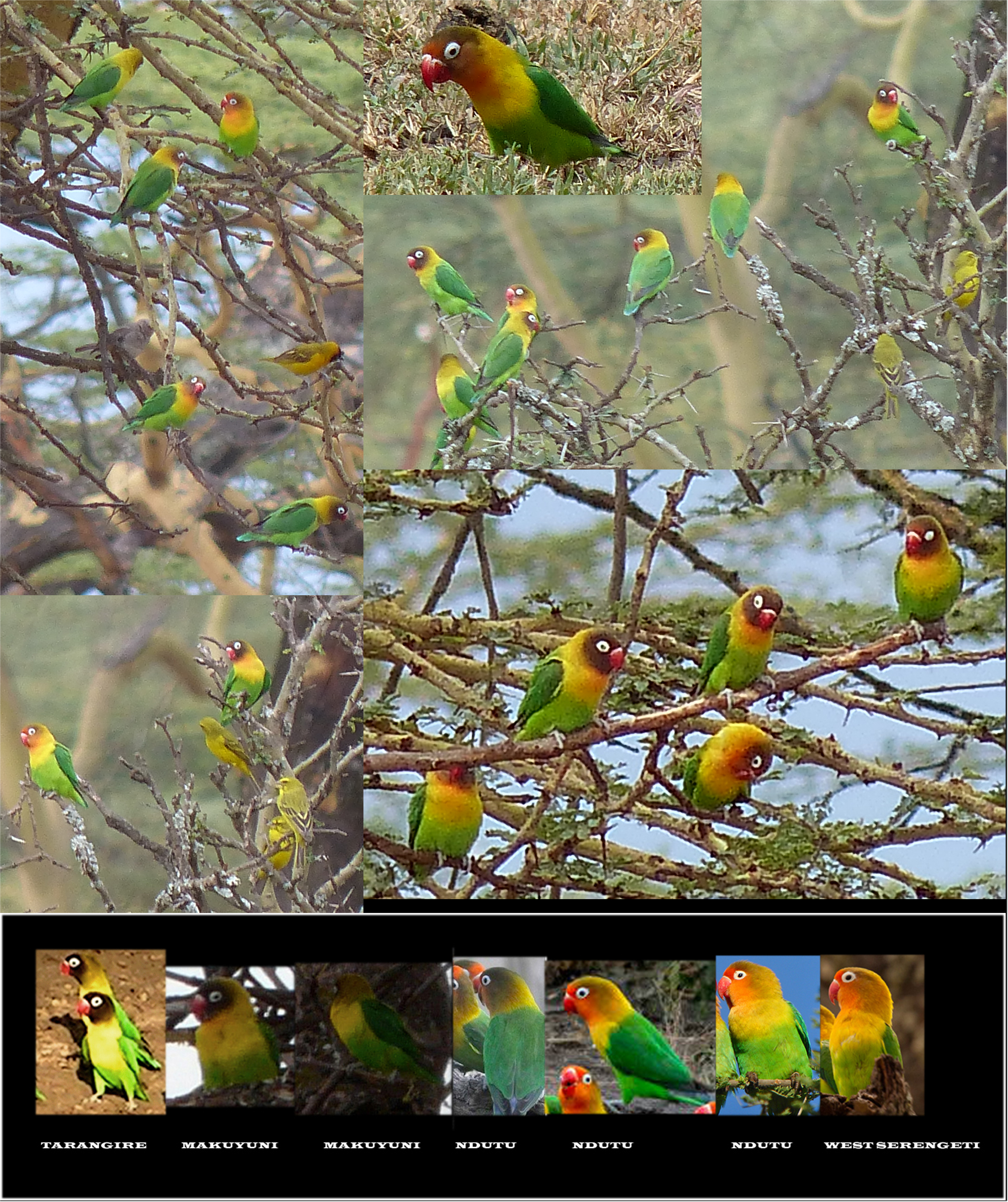From: Brian Finch <birdfinch@gmail.com>
Date: 2014-05-05 13:14
Subject:
Dear All,
Nigel Hunter and myself visited Sanctuary Farm at Naivasha, and as
well as a good birding destination, it is rich in Lovebirds and I
managed to get images of many individuals.
Unlike Nairobi, Thika, Isiolo, Kisumu, it would seem that there have
been recent introductions of Yellow-collared types, and the dark hood
is a persistent feature of Rift Valley birds. There are signs that
birds are degenerating to what I am terming as the typical Ndutu,
Tanzania hybrid. This is where instead of the orange faced and
throated, brown to gold naped birds that typify Fischer’s dominance,
they have broad lemon-yellow breast bands, yellow collars and the
indication of the sooty face of Yellow-collared, with flushes of
orange on face and throat.
Whereas in Tanzania it is probable that a population of lovebirds is
only directly influenced by its immediate neighbours, and in the
natural habitat there is probably little influenced by man introducing
genes from birds far away, in Naivasha the introductions have in all
likelihood started with fairly pure Yellow-collared and Fischer’s, but
the issue complicated by the release of hybrids into the already
hybridising population and causing pandemonium. In a mixed flock it is
possible to see all the results of this mixing.
I can’t actually say that I am closer to understanding what is
happening with the species in Tanzania by looking at Kenya birds, but
the images are entertaining, it might demonstrate that the birds are
falling back gradually to an Ndutu like form as in Nairobi, and this
could be the perfect hybrid but at present there is much dark in the
faces. If you look at the image I sent in suggesting a cline from east
to west, in the birds from Makuyuni, the dark face is not anywhere
near as extensive as the Yellow-collared of Tarangire, and the area is
reducing leaving a wide yellow border to the rear sides of the face.
It looks like this is happening in all of the dark faced Naivasha
birds, which are now more masked than hooded.
In birds where the dark face has reduced more, orange appears on the
forehead, face and throat, like typical Ndutu.
Some very dark-headed birds are showing reddish bands below the dark
and above the yellow breast band. This does not actually fall into
what seems to be a sequence, and suggests that another hybrid with
more Fischer’s characteristics has come into the already hybrid
population.
The bird on its own centre top is probably the bird with most
Fischer’s trait, that was seen.
With any of these birds being able to pair up with any other of
opposite sex, and be able to produce viable offspring, it’s no
surprise that this represents confusion.
Best for now
Brian

